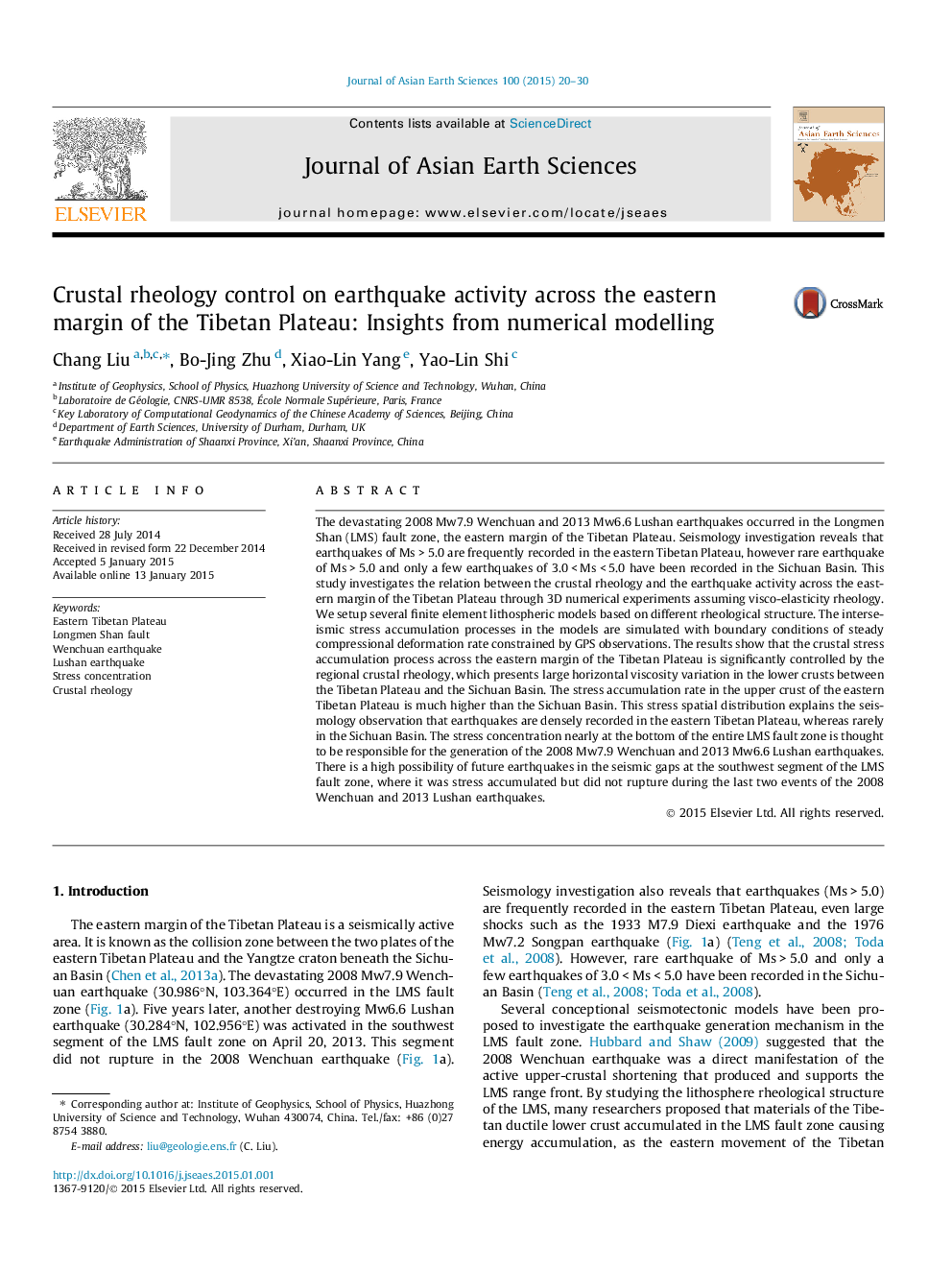| کد مقاله | کد نشریه | سال انتشار | مقاله انگلیسی | نسخه تمام متن |
|---|---|---|---|---|
| 4730470 | 1640369 | 2015 | 11 صفحه PDF | دانلود رایگان |
• Earthquake activity across the eastern margin of the Tibetan Plateau is significantly controlled by the crustal rheology.
• Stress accumulates faster in the upper crust of the eastern Tibet than the Sichuan Basin.
• Stress concentration in the entire Longmen Shan fault zone is responsible for its earthquake generation.
• There is a high possibility of future earthquake in the seismic gaps at the southwest segment of the Longmen Shan fault zone.
The devastating 2008 Mw7.9 Wenchuan and 2013 Mw6.6 Lushan earthquakes occurred in the Longmen Shan (LMS) fault zone, the eastern margin of the Tibetan Plateau. Seismology investigation reveals that earthquakes of Ms > 5.0 are frequently recorded in the eastern Tibetan Plateau, however rare earthquake of Ms > 5.0 and only a few earthquakes of 3.0 < Ms < 5.0 have been recorded in the Sichuan Basin. This study investigates the relation between the crustal rheology and the earthquake activity across the eastern margin of the Tibetan Plateau through 3D numerical experiments assuming visco-elasticity rheology. We setup several finite element lithospheric models based on different rheological structure. The interseismic stress accumulation processes in the models are simulated with boundary conditions of steady compressional deformation rate constrained by GPS observations. The results show that the crustal stress accumulation process across the eastern margin of the Tibetan Plateau is significantly controlled by the regional crustal rheology, which presents large horizontal viscosity variation in the lower crusts between the Tibetan Plateau and the Sichuan Basin. The stress accumulation rate in the upper crust of the eastern Tibetan Plateau is much higher than the Sichuan Basin. This stress spatial distribution explains the seismology observation that earthquakes are densely recorded in the eastern Tibetan Plateau, whereas rarely in the Sichuan Basin. The stress concentration nearly at the bottom of the entire LMS fault zone is thought to be responsible for the generation of the 2008 Mw7.9 Wenchuan and 2013 Mw6.6 Lushan earthquakes. There is a high possibility of future earthquakes in the seismic gaps at the southwest segment of the LMS fault zone, where it was stress accumulated but did not rupture during the last two events of the 2008 Wenchuan and 2013 Lushan earthquakes.
Journal: Journal of Asian Earth Sciences - Volume 100, 15 March 2015, Pages 20–30
